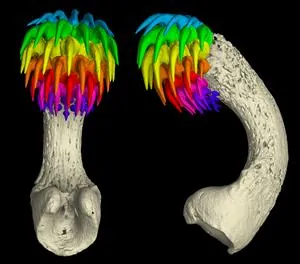
Prostate Cancer Crisis: Alarming Rise in Diagnoses and Racial Disparities Exposed
2025-09-03
Author: Li
Prostate Cancer Statistics Reveal Urgent Public Health Challenge
In a shocking revelation, the American Cancer Society (ACS) has unveiled its annual report on Prostate Cancer Statistics for 2025, highlighting a troubling increase in incidence rates and a concerning slowdown in mortality decline. The data, gathered by the National Cancer Institute and the Centers for Disease Control and Prevention, paints a stark picture of the current prostate cancer landscape.
Disturbing Trends in Diagnosis and Survival Rates
The findings indicate a significant shift in prostate cancer trends. While incidence rates saw a steady 6.4% decline annually from 2007 to 2014, the tide has turned since 2014, with rates now rising by 3.0% each year. This surge is largely attributed to an increase in late-stage diagnoses, climbing at alarming rates of 4.6% to 4.8% annually.
Mortality rates, which had been steadily decreasing since the 1990s, have also shown signs of stagnation. Previously, death rates fell by 3% to 4% each year, but they have dwindled to about 0.6% per year over the last decade. Alarmingly, the report projects that by 2025, there will be approximately 313,780 new prostate cancer cases resulting in 35,770 deaths.
The Importance of Early Detection
The stark disparity in survival rates emphasizes the crucial role of early detection. The 5-year relative survival rate for advanced-stage prostate cancer is just 38%, whereas it skyrockets to nearly 100% for those diagnosed at local or regional stages. This underscores the urgent need for men, especially those at higher risk, to engage in regular screening conversations with their healthcare providers.
Racial Disparities: An Unacceptable Reality
The report casts a glaring light on racial disparities within prostate cancer outcomes. Black men face a staggering 67% higher incidence rate and are twice as likely to die from the disease compared to their white counterparts. Native American men also reveal troubling statistics, experiencing a 12% higher mortality rate despite lower incidence.
According to Tyler Kratzer, MPH, a lead author of the study, these disparities underline the critical need for comprehensive research into the causes of prostate cancer and the optimization of screening methods. The ACS recommends that all men discuss screening options at age 50, but advises Black men and those with a family history to do so at just 45.
Further analysis reveals that American Indian and Alaska Native (AIAN) men are most at risk for advanced-stage diagnoses due to lower screening rates, confirming the need for increased educational outreach.
Breaking Down Mortality Rates by Demographics
The mortality rates also reveal a grim hierarchy, with Black men suffering the highest at 36.9 deaths per 100,000 population, followed by AIAN men (20.6), White men (18.4), Hispanic men (15.4), and Asian American and Pacific Islander men (8.8). Geographically, the highest mortality rates are observed in Washington D.C. (27.5 per 100,000) and Mississippi (24.8 per 100,000), predominantly affecting Black communities.
Legislative Initiatives to Combat Prostate Cancer
In response to these alarming trends, the Prostate-Specific Antigen Screening (PSA) for High-risk Insured Men (HIM) Act is gaining traction in Congress. This bipartisan bill aims to eliminate financial barriers for high-risk men seeking prostate cancer screenings, ensuring that cost-sharing requirements do not impede early detection.
Lisa A. Lacasse, president of the ACS Cancer Action Network, emphasizes the importance of this legislation, stating, "No one should face financial barriers when it comes to early detection." With strong advocacy for this bill, there is a renewed hope for reducing the stark disparities and saving countless lives.



 Brasil (PT)
Brasil (PT)
 Canada (EN)
Canada (EN)
 Chile (ES)
Chile (ES)
 Česko (CS)
Česko (CS)
 대한민국 (KO)
대한민국 (KO)
 España (ES)
España (ES)
 France (FR)
France (FR)
 Hong Kong (EN)
Hong Kong (EN)
 Italia (IT)
Italia (IT)
 日本 (JA)
日本 (JA)
 Magyarország (HU)
Magyarország (HU)
 Norge (NO)
Norge (NO)
 Polska (PL)
Polska (PL)
 Schweiz (DE)
Schweiz (DE)
 Singapore (EN)
Singapore (EN)
 Sverige (SV)
Sverige (SV)
 Suomi (FI)
Suomi (FI)
 Türkiye (TR)
Türkiye (TR)
 الإمارات العربية المتحدة (AR)
الإمارات العربية المتحدة (AR)